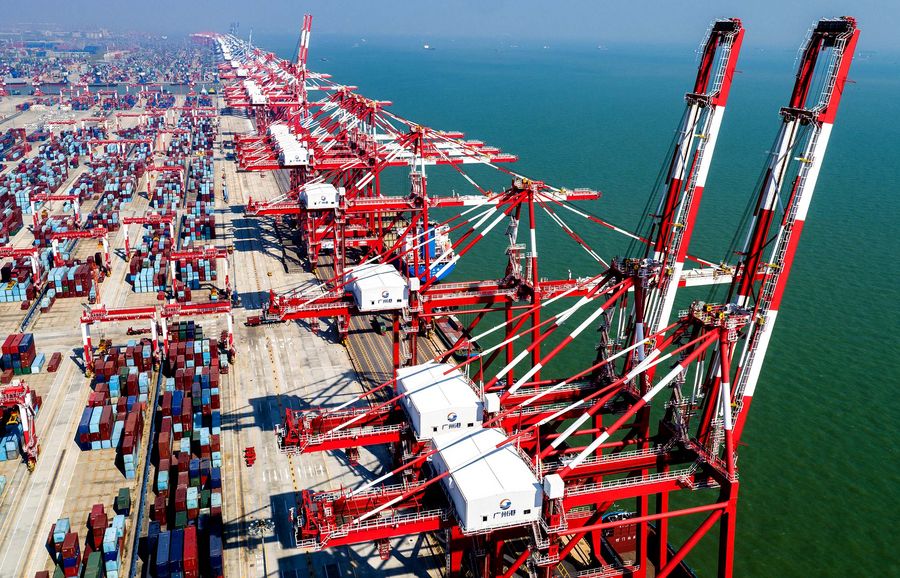Tomorrow's infrastructure is built today
By Erik Berglof | China Daily | Updated: 2021-02-01 07:56

The COVID-19 pandemic has exposed the vulnerabilities and structural weaknesses of many economies across the world, and their recovery is likely to be slow, arduous and uneven. Asian countries and regions must reconsider their approach to economic development and growth, especially because they face the double challenge of climate change and ageing demographics-not to mention ever-faster technological change.
Now is the time for policymakers and business leaders to make the investments we need to come out of this pandemic better prepared for the future. Sectors spanning from healthcare and education to manufacturing and technology together ensure solid foundations for a sustainable and prosperous tomorrow.
To this end, we see five emerging infrastructure trends that will shape Asia's post-COVID-19 recovery. These trends reflect the investment we need to meet the short-term challenge of the pandemic and prepare for medium-to long-term growth that is both climate-resilient and eco-smart.
Green projects need cost-effective planning
Governments should address the public health crisis and provide immediate relief for affected businesses and workers. In the post-crisis era, however, public policies must align more closely with climate objectives to reduce the risk of locking in carbon-intensive infrastructure. Stimulus packages have targeted sectors and technologies, accelerating the economic transition and increasing resilience to future shocks from climate change. Yet the actual volume of green infrastructure investment remains much below desired targets.
Environmental, social and governance standards, important across all business activities, are driving the next growth frontier in asset management. And although investment decisions will increasingly factor in these standards, sustainable investment will require leadership, a culture of innovation and effective engagement with all stakeholders.
The pandemic has also exposed social infrastructure as a weak link in global production chains. Healthcare and education, as well as social housing, have suffered from chronic under-investment in many countries with different income levels. This lack of investment is perhaps most pronounced in basic healthcare.
According to the Global Infrastructure Hub, private investment in social infrastructure fell from $19 billion in 2010 to $3 billion in 2019. Given the limited scope for public spending and the challenges of a post-COVID-19 recovery, channeling private capital into social infrastructure is absolutely necessary.
Crowding in of private capital
As the immediate health impacts of COVID-19 gradually recede, countries will have to deal with deep economic scarring from the pandemic, including widespread bankruptcies, increased unemployment and high debt levels.
Governments under fiscal constraints would do well to regard the sale of existing assets to private investors as a path forward. As for private companies, they could also choose to exit some projects and shift to new investments promising better asset performance, especially because the low-interest-rate environment will be supportive of companies taking advantage of such opportunities.
And since multilateral development banks can bring financiers together, ensure alignment of projects with economic and social objectives, provide counter-cyclical financing and protect against political risk, they should consider high-return, high-quality investment outside their traditional comfort zone to help boost recovery, reduce public debt and set examples for the private sector to follow.
Technology can unleash infrastructure potential
The application of technology to infrastructure has been sluggish. For example, 64 percent of stakeholders in infrastructure cite a lack of understanding as the main barrier to adopting appropriate technology. The pandemic, however, has made us more aware of the many uses of technologies even in traditional infrastructure.
Investors in infrastructure projects fear that infrastructure technology solutions will generate illiquid and underperforming assets. They face a choice between investing in a promising technology and leaving it to others and exposing themselves to the risk of being disrupted. Proactive approaches to technology include the setting up of funds, corporate ventures, internal technology consultation units or partnerships with technology companies.
As far as connectivity infrastructure is concerned, it likely has some years of mixed results ahead. Airport infrastructure, for instance, will not recover any time soon. The global supply chains have been resilient throughout the pandemic, but the supply chain infrastructure will continue to face uncertainties, including in technology-related investments, and "reshoring" and "near-shoring" activities.
Uncertainties must not stop critical investment
But despite the uncertain trade backdrop, there will be "no-regret" investments. For example, improving existing port efficiency through automation and green upgrading will help build resilience to any future macroeconomic shocks. Investing in smarter road infrastructure, with greater digitalization and preparation for an all-electric future, will also pay off in the long run. And investments in storage infrastructure are needed to make supply chains more resilient.
Finally, investing in digital connectivity will prepare us for a better post-pandemic future. This is the time to let our thinking evolve instead of blindly copying what has already been done. Opportunities abound to leverage high-quality, climate-resilient and tech-enabled infrastructure to unlock a new green economy in Asia.
The AIIB will not stand by and miss the chance to pave a sustainable path for future generations.
The author is the Chief Economist at Asian Infrastructure Investment Bank.
The views don't necessarily reflect those of China Daily.
























